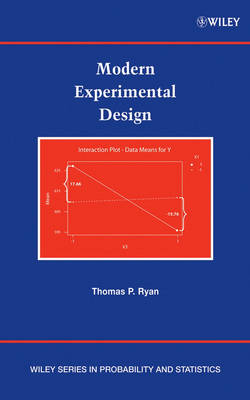Wiley Series in Probability and Statistics
1 primary work • 5 total works
Book 401
Using a large number of references with detailed analyses of datasets, Modern Experimental Design works as a well-rounded learning tool for beginners as well as a valuable resource for practitioners.
Using a large number of references with detailed analyses of datasets, Modern Experimental Design works as a well-rounded learning tool for beginners as well as a valuable resource for practitioners.
A comprehensive approach to sample size determination and power with applications for a variety of fields
Sample Size Determination and Power features a modern introduction to the applicability of sample size determination and provides a variety of discussions on broad topics including epidemiology, microarrays, survival analysis and reliability, design of experiments, regression, and confidence intervals.
The book distinctively merges applications from numerous fields such as statistics, biostatistics, the health sciences, and engineering in order to provide a complete introduction to the general statistical use of sample size determination. Advanced topics including multivariate analysis, clinical trials, and quality improvement are addressed, and in addition, the book provides considerable guidance on available software for sample size determination. Written by a well-known author who has extensively class-tested the material, Sample Size Determination and Power:
- Highlights the applicability of sample size determination and provides extensive literature coverage
- Presents a modern, general approach to relevant software to guide sample size determination including CATD (computer-aided trial design)
- Addresses the use of sample size determination in grant proposals and provides up-to-date references for grant investigators
An appealing reference book for scientific researchers in a variety of fields, such as statistics, biostatistics, the health sciences, mathematics, ecology, and geology, who use sampling and estimation methods in their work, Sample Size Determination and Power is also an ideal supplementary text for upper-level undergraduate and graduate-level courses in statistical sampling.



